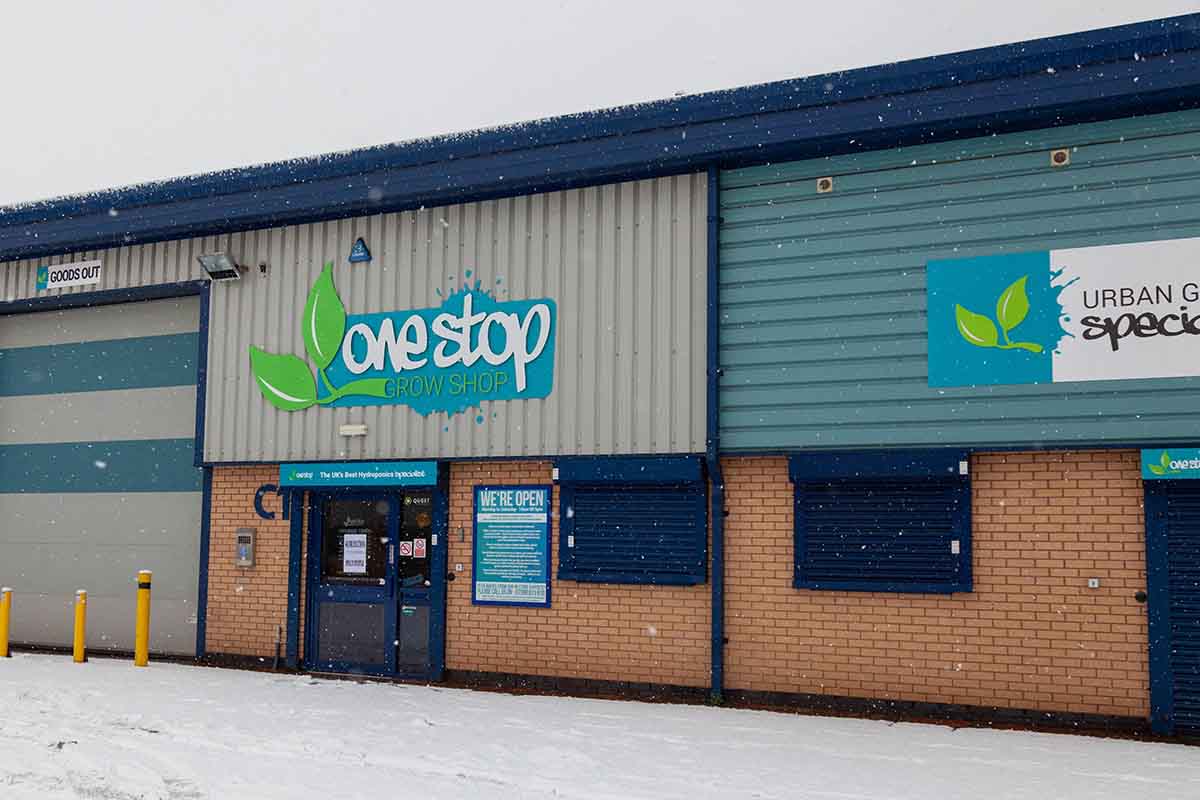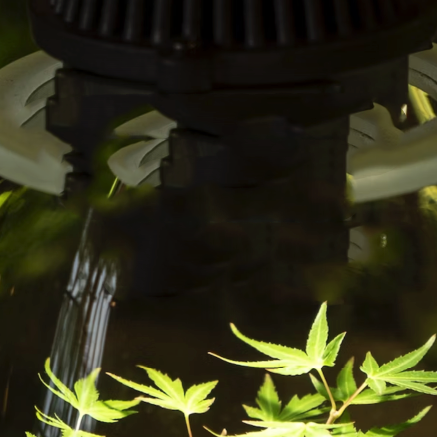Top Tips For Growing In Cold Conditions
Maintaining the right environmental conditions is the key to a successful grow; poor environments lead to a lower quality end-product and reduced yields. Keeping conditions within the correct ranges is one of the biggest challenges growers face, and the UK climate is renowned for its unpredictability. Colder months are ideal for growing, because it's much easier to heat up the grow space than it is to cool it down, which requires costly air conditioning units. This guide talks about ideal grow room conditions and the products you need to maintain them.
What's the Correct Air Temperature for Plants?
Popular indoor plants thrive in warm conditions. The sweet-spot for the grow room environment sits at around 25°C during their daytime (lights-on period). During the dark period, a few degrees temperature drop is desirable to simulate a natural outdoor environment, though the temperature should ideally not go below 18°C, and should never go below 15°C. It may only take one or two cold (sub 15°C) periods for plants to enter a state of extreme stress. If plants stall in this way, it can take 2-3 weeks for them to recover. Should this happen, your plants will simply never reach their full potential, having a hugely detrimental effect on the final outcome.
Turn Your Fan Speeds Down
Once you're set up with the basics, the very next thing to invest in is a fan speed controller. When it comes to the grow room environment, there really is nothing more important. A decent fan speed controller will lower fan output levels whenever temperatures drop below your chosen setting. This reduces energy consumption and helps to maintain a consistent climate. As soon as outside temperatures start to drop, your fans will reduce their airflow to compensate for it. We stock a huge range of controllers - just make sure that you choose one that's compatible with your fan. You can find plenty of information by taking a look at our product listings.
Adding Heat to a Grow Tent or Growing Space
Tubular greenhouse heaters, like the Grow Gadget versions are extremely popular. They take up very little room and are available in a range of sizes (and wattages) to suit the size of your grow space. They slot in between plants nicely and will keep the chill off without you having to re-arrange your whole set-up.
Tube Heaters are great for taking the chill off, but if temperatures get too low, you'll need something a bit more powerful.
Oil-filled radiators kick out lots of heat without using too much energy. They use an electrical element to heat up an internal reservoir of thermal oil, which then preserves the heat, reducing the need for extra power. The system is similar in many ways to central heating, and with thermostatic control you can tailor the output to your exact needs.
Greenhouse Heaters come with built-in fans that blow air over a heating element, dispersing heat around the grow space. They raise temperatures in seconds, which explains why they're customer favourites. They're lightweight and can be moved around quickly and easily, thanks to their built-in carrying handle. You can purchase them with or without additional thermostats. We'd recommend opting for thermostatic control - that way, the Palma Heater will kick in whenever its needed, keeping the grow space firmly in the sweet spot. They’re IPX4 rated, making them splash proof and giving you plenty of peace of mind.
It's Not Just Air Temperature - It's Your Nutrient Solution, Too!
It is not just cold air that can cause slowed growth in plants, low nutrient solution temperatures can cause it, too. If you have a reservoir in your hydroponics system, you'll need to keep your nutrient solution between 18°C and 21°C. Fortunately, a simple tank heater does the job well, even in difficult situations.
Sizes and wattages are available to suit any reservoir. If your tank is particularly large, you can add as many of these tank heaters as you need to meet your demands.
50W - Up to 25 Litres
100W - Up to 75 Litres
150W - Up to 125 Litres
200W - Up to 180 Litres
300W - Up to 280 Litres
Running them is as easy as it gets. Just set the temperature, fit it to the bottom or side of your tank (submerged) and plug it in.
Add Another Grow Light!
One of the easiest and most productive ways to solve the problem of cold weather is to add another grow light. Doing so will produce extra heat as a by-product, which can help to maintain optimal temperatures during colder periods. Greater levels of light make for bigger potential yields, so it's a win-win, and old school high intensity discharge lighting is perfect for the job. We stock 600 watt HPS grow light kits at ridiculously low prices. And if you're feeling like splashing out, take a look at a CDM grow light fixture, which produces better light spectrums and faster growth.
Protect Your Root Mass
Roots are the engine of the plant, and they also thrive in optimal environments. As we all know, heat rises, so the floor of the grow space is likely to be the coldest area, which can cause big problems. But don't worry, there are plenty of ways to help the situation. The above-mentioned heaters improve the situation a lot, but another simple thing you can do is to raise your pots off the floor, which helps to insulate the bottoms. A flat layer of polystyrene is perfect for the job, protecting containers from extreme cold. This is particularly important for growers working on concrete floors.
Make Your Plants More Resistant to Cold
Cold weather can stress your plants, slowing growth and leaving them vulnerable to damage. SHOGUN Silicon helps by fortifying your plants’ natural defences. Silicon strengthens cell walls, making plants more robust and able to withstand environmental challenges like drops in temperature.
Stronger cell walls not only improve your plants’ resilience but also help them retain water more effectively, reducing the risk of cold-induced dehydration. By adding SHOGUN Silicon to your feeding routine, you’re giving your plants the extra armour they need to thrive, even in chilly conditions.
Incorporating SHOGUN Silicon into your grow ensures your plants stay healthier, hardier, and better equipped to handle the cold.
Run Your Heaters With a Thermostat
If your heater doesn't have its own thermostat, we'd recommend using the Grow Gadgets Thermostat Controller to regulate it. Just plug your heater into the Lighthouse Thermostat's socket and plug the thermostat into the wall. The separate temperature sensor can be placed near to the plant canopy, providing temperature information that's as accurate as possible. It will then wirelessly relay the information to the thermostat, telling it when to switch heating on and off, in order to keep conditions in the sweet spot. Don't forget that you'll need a couple of AA batteries to power the wireless unit. It uses very little power, so the batteries will last for a very long time before they need to be replaced.
Finally, we have the AirComfort, which monitors grow room conditions via a smartphone app. You can use this data to tweak your equipment settings, giving you the information you need to get things bang on point.
Hopefully these products and tips can keep you maxing out yields as temperatures drop. If you're still struggling, don't hesitate to get in touch with us!
Happy Growing

